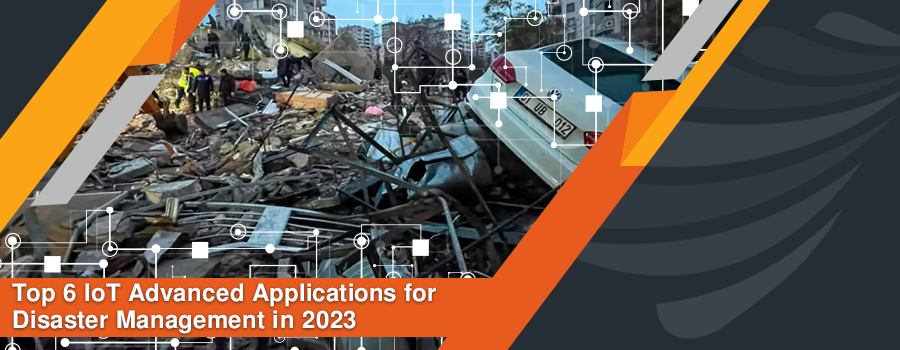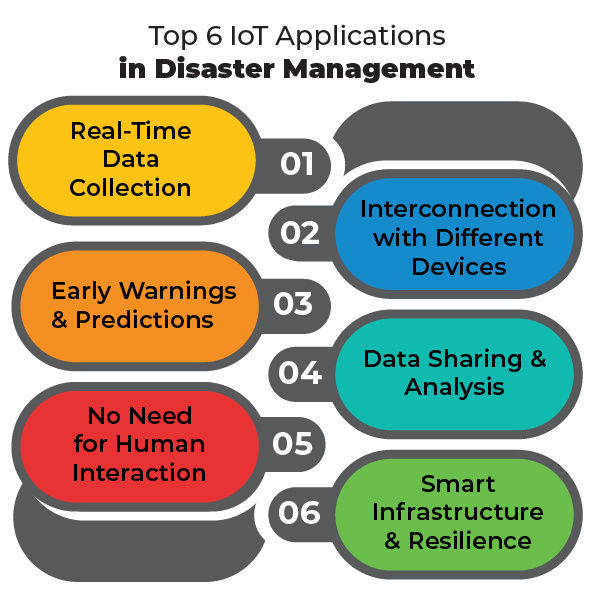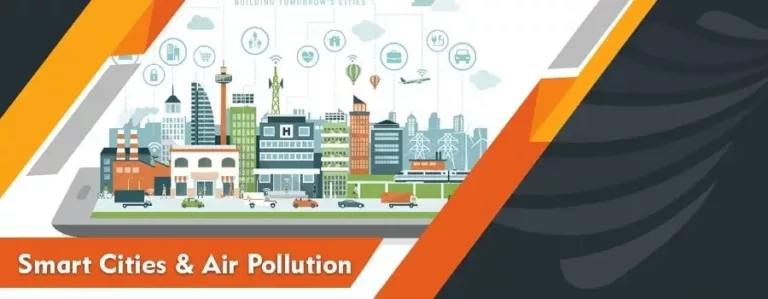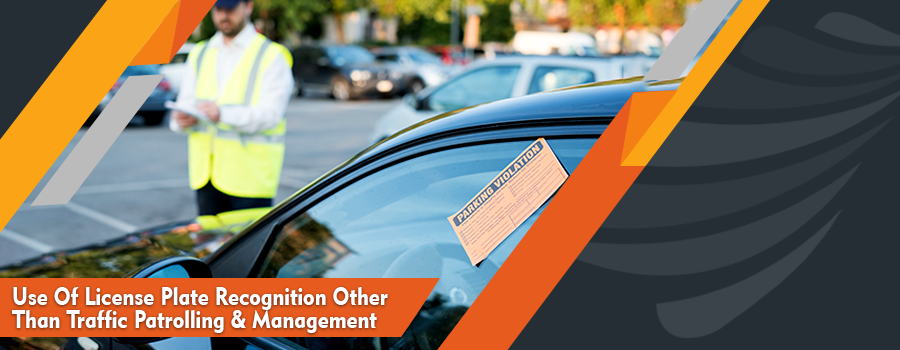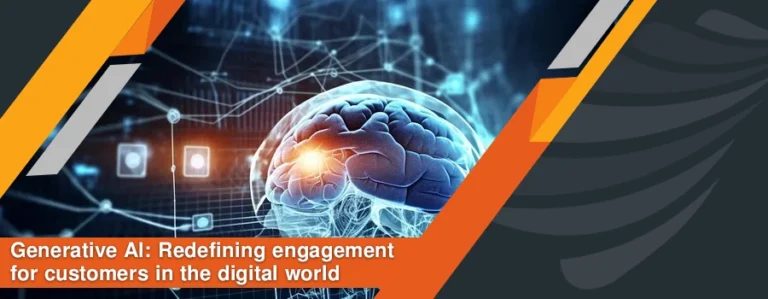Worldwide, natural disasters have increased. It causes huge losses to live, infrastructure, natural resources, and other assets. We can use most benefits of AI and IoT to manage disasters from preparation to recovery.
The Internet of Things (IoT) provides real-time information, analytics, and networking with other technologies. Thus, it is a game changer for managing and controlling disaster risks. It plays a major role in research, planning, and analysis. Therefore, it prevents natural and other disasters in the long term.
Disasters occur globally, affecting citizens, the government, the economy, and the environment. There is a need to spread awareness about IoT to reduce the risks of disaster occurrence worldwide.
What is Disaster Management
Disaster management is a process to mitigate potential damage from disasters. It ensures sustainable and immediate support to victims. Also, it provides effective and rapid recovery opportunities. We need important information about the impact and cause of disasters. IoT helps in it, and we achieve effective planning and relief operations.
What is the Role of IoT in Disaster Management
IoT may not control disaster occurrence, but it can help in management. With interconnectivity, it provides environmental monitoring and victim aid. It also identifies life-threatening hazards and alerts authorities at an early stage. Consequently, it saves resources, money, and lives.
Top 6 IoT Applications in Disaster Management
– Real-Time Data Collection
IoT provides support to disaster management experts by providing real-time data. It helps to make prompt decisions during and before the disaster recovery period. For instance, it offers real-time communication and analysis. Thus, it makes searching for missing people and funding options easy.
IoT broadens knowledge of disaster management, including its characteristics, cause, and impact. With real-time data analysis, it provides technical help for disaster management operations. For example, it helps monitor real-time environmental factors such as air quality, humidity, temperature, and water levels. By analyzing this data, authorities can assess risks and take preventive measures to reduce the impact of disasters.
– Interconnection with Different Devices
IoT provides the interconnection of different devices and objects. IoT network comprises wireless sensors, computers, mobile devices, and satellites. This interconnection helps to innovate and advance the actions of risk assessment. Other functions involve mapping affected locations and the adoption of preventive majors.
The connection with different devices allows resource allocation and strategic analysis. Also, it helps to understand various factors involved in disaster occurrence. By using advanced links, we can better understand the weather and environment.
– Early Warnings and Predictions
Engineers place sensors on bridges, buildings, and other places. These sensors gather data to help in monitoring and analysis. The IoT devices identify patterns to predict earthquakes. They send alerts to authorities via mobile devices and also send warnings. These systems are also available for public announcement systems to guide them. The IoT devices help to decrease the risks of disasters and save lives. Also, it helps to raise awareness and reduce the cost of relief measures.
Additionally, its application makes rescue operations easy for emergency volunteers. For instance, deployed acceleration sensors detect and predict earthquakes. Then, the system analyzes data and sends alerts via mobile application. These alerts allow the authorities to take preventive measures for life-saving purposes.
– Data Sharing and Analysis
IoT aids in data sharing and analysis, allowing mutual collaboration between professionals. IoT aids in data monitoring, sharing, and research. It will enable cooperation among professionals involved in disaster management. To elaborate, IoT provides solutions by monitoring the parameters of patients. These may include temperature, blood pressure, heart rate, and breathing rate.
It sends data to different software applications. Here, healthcare professionals and technical teams view and analyze data. They use algorithms for better diagnosis and optimization and suggest treatment options. With IoT, it is possible to make smart physical infrastructure. It involves using sensors, AI, IoT devices, and wireless connections. Data sharing and interconnection help to achieve a better quality of life.
– No Need for Human Interaction
In disaster scenarios, it is difficult to access affected areas. IoT devices like remote sensors and drones regulate such regions. They do not need human interaction. These devices can capture aerial images. Later, transfer data in real-time to the disaster management centers. It assists in damage assessment and identification of areas that need immediate attention. Now, without risking human lives, we can provide prompt and efficient emergency responses.
– Smart Infrastructure and Resilience
IoT plays a major role in building resilient infrastructure. It withstands disasters and minimizes the chances of huge losses. Smart buildings have IoT sensors and AI integration. It helps to monitor structural integrity, trigger automated responses and detect risks. It also assesses the frequency of destructive forces and responds to them. The system automatically shuts down electricity and gas lines if an earthquake occurs. Similarly, it also activates a fire suppression system and sends alerts. These advanced measures help to decrease the chances of disaster destruction.
Challenges in the Implementation of IoT for Disaster Management
There is a need for improvement in IoT technology integration with design perspectives and cost. It involves optimizing device performance with the least expensive but smart software and hardware. To overcome this challenge, they must use cutting-edge technology. The other major challenge is awareness and education. The crisis management team must get training to manage and analyze the data in one go. Thus, there is a need to implement context awareness strategies and education programs.
Security is another difficult challenge, especially during a crisis. Any unauthorized person can breach the privacy and confidentiality of many people by accessing and retrieving user information. Therefore, there is a need to upgrade the systems with advanced security features.
Another challenge is interoperability. The sensor node design should allow data relay to remote users. There is also a need for maintenance of those areas where there is less or no population. However, the maintenance of IoT devices is challenging and costly. It is advisable to use low-maintenance tools in IoT-based emergency regions.
Future Aspects
In the future, IoT can bring exciting opportunities to eliminate the risks of disaster loss. With computational tools and deep learning, we can enhance automated responses. Edge computing can process data locally and ensure operations even with restricted cloud computing. Robotic process automation will transform rescue and search operations when integrated with IoT systems. With wearables and mobile applications, we can increase citizen engagement and awareness.
The future aspects of IoT have immense potential to revolutionize disaster management. We can get proactive, efficient, and resilient operations to protect communities and overcome disaster-related risks.
Conclusion
The Internet of Things allows humans and the world to connect. In disaster management, IoT plays a pivotal role. IoT devices like cameras, sensors, and wearable devices collect real-time data and send alerts. We can analyze data by integrating IoT systems with AI and machine learning. Based on this, authorities can make informed decisions. It helps to provide rapid emergency response to the victims and minimize damage. Also, we can reduce the overall cost involved in disaster management programs. To avail the maximum benefits of IoT, we should reduce challenges. These include high prices, security concerns, interoperability, design, and maintenance.

